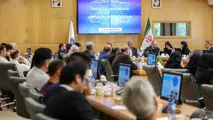Revitalizing Maritime Training: Building Effective Courses for Sustainable Global Shipping
To achieve sustainable development in the international maritime transportation system, training institutions must focus on producing high-quality, engaging, and well-structured content delivered by skilled instructors who can simplify complex knowledge. Strengthening maritime governance and legislation systems across IMO member states should take priority, while innovative policies are needed to increase course enrollment and stakeholder satisfaction.

A key recommendation to strengthen the performance of maritime training institutions.
Which policies and measures will increase the number of applicants for training courses? Or which policies will improve the satisfaction of the parties to the training courses? Which titles of training courses are the needs of the stakeholders of the world's maritime industry today?
A recommendation to senior officials of Maritime Training Institutes and Academies.
I have come to believe that holding effective training courses for the stakeholders of the world's maritime industry is the main and current prerequisite for the sustainable development of the international maritime transportation system, and also the effectiveness of the training courses has a significant relationship with the quantity and quality of the content produced by the qualified instructor or the institution providing training and educational services. Therefore, it is necessary and essential that the training content be produced wisely, attractively, and effectively and then presented in classrooms.
A qualified lecturer or Instructor must love the teaching profession. There are experts who have valuable specialized knowledge in one or two areas but are not successful in the field of teaching. But for some reason, they have entered this sensitive and key field and think that they will succeed in this field as well! They don't even spend time on producing training content, but they do their job with a few changes in the content produced by others!
Producing attractive and effective training content for the audience can only be done by those who, in addition to having specialized knowledge of that training title, have a INTegrated, COMprehensive, and SYStematic (INTCOMSYS) view or approach on issues, and most importantly, have the skill of Simplifying Complex Information (SCI).
Some believe that the main reason for the decline in demand for training courses is related to the capabilities of artificial intelligence, I tell them that this is not true, because the effectiveness of the content that a qualified instructor with the two aforementioned skills (SCI + INTCOMSYS approach) can produce is not comparable to the content produced by AI tools. Of course, transferring knowledge from person to person through classroom attendance has other advantages that I do not intend to discuss in this note.
On the other hand, I believe that, at the present time, holding training courses in order to strengthen the maritime governance and legislation systems of the IMO's Member sates has a higher priority than other training topics or titles. As long as these two important and key systems are not reformed or strengthened in most countries of the world (80 percent of them), the outcome or results of holding training courses will not be satisfactory. Now check what the titles of the training courses should be?
Unfortunately, the lack of attention to the aforementioned issues has led to a decrease in the demand for holding training courses.



